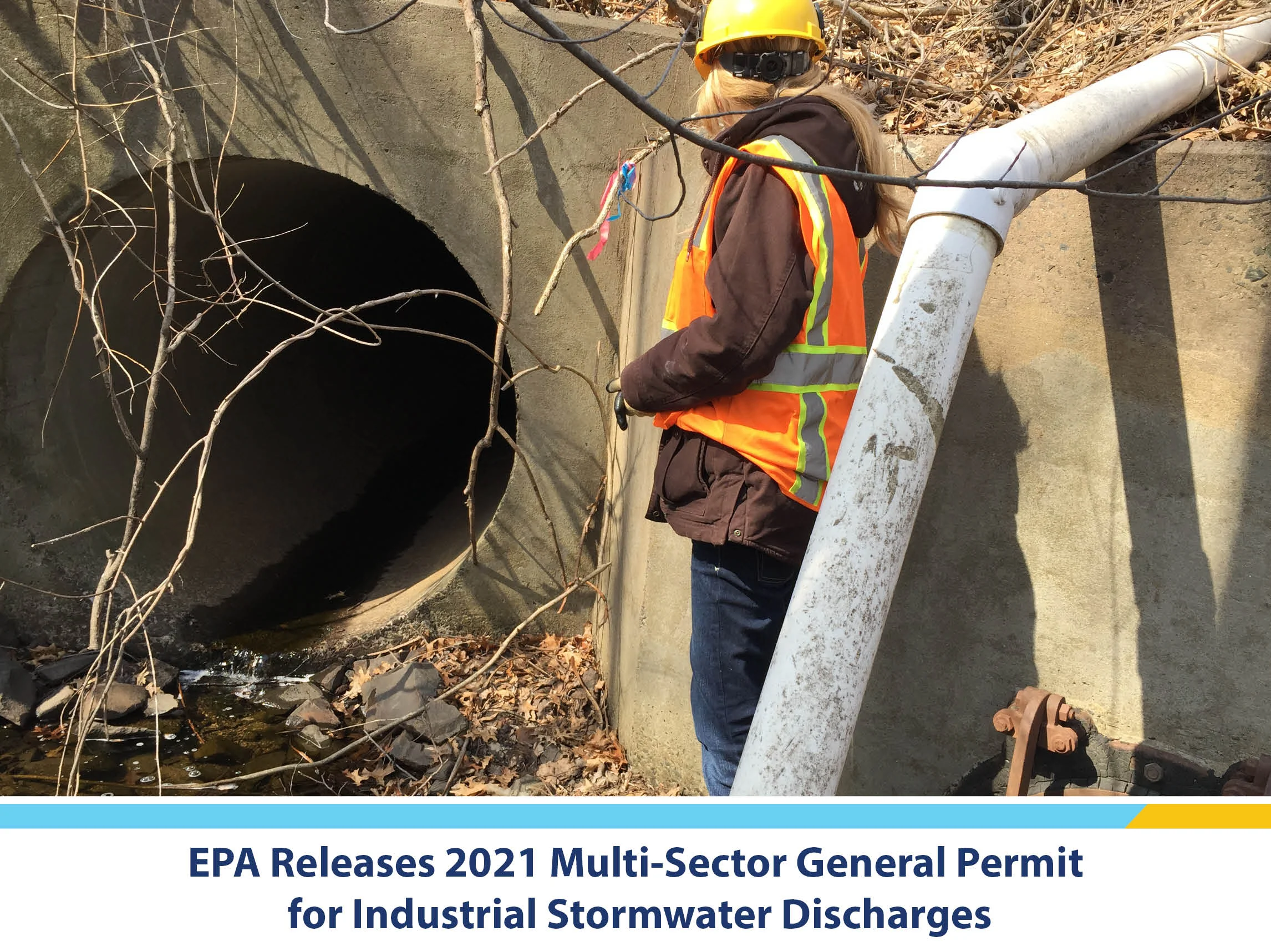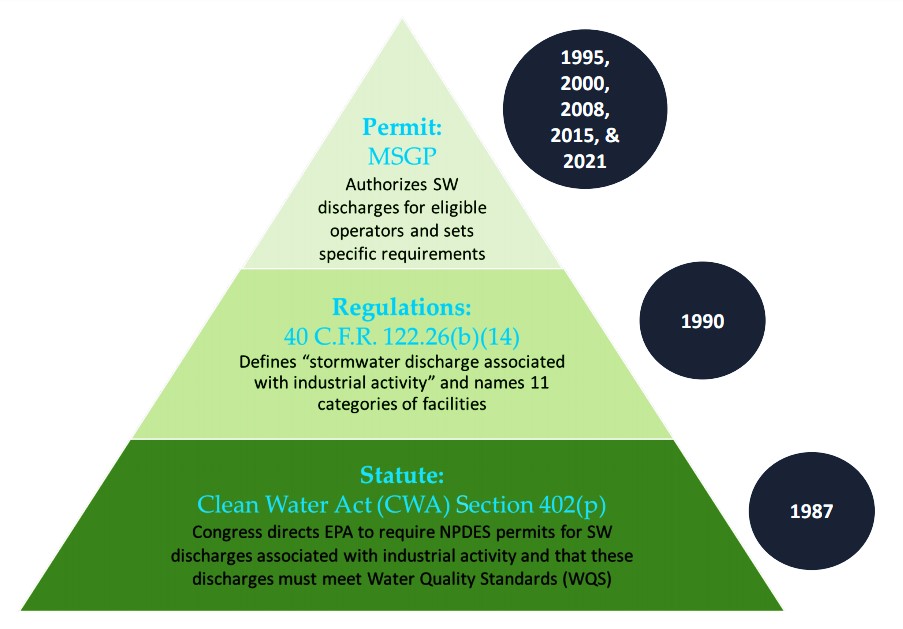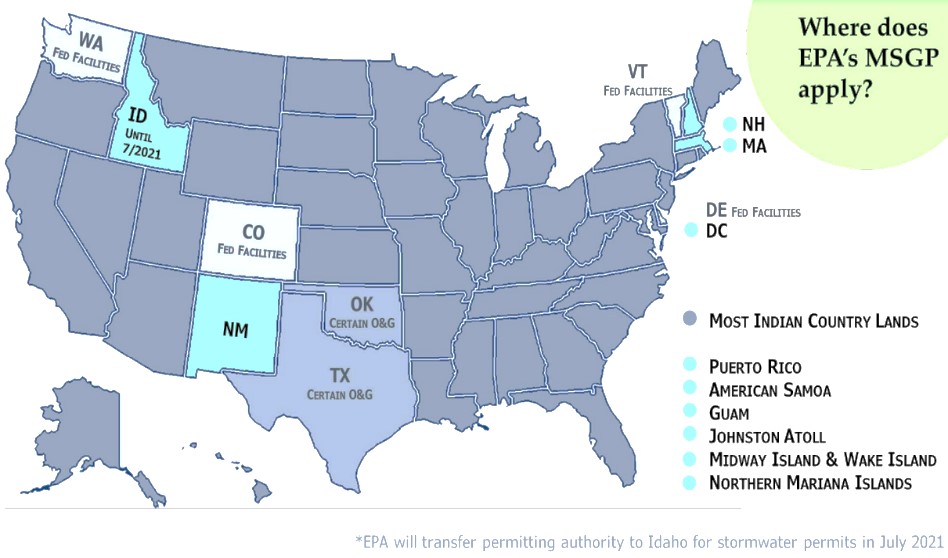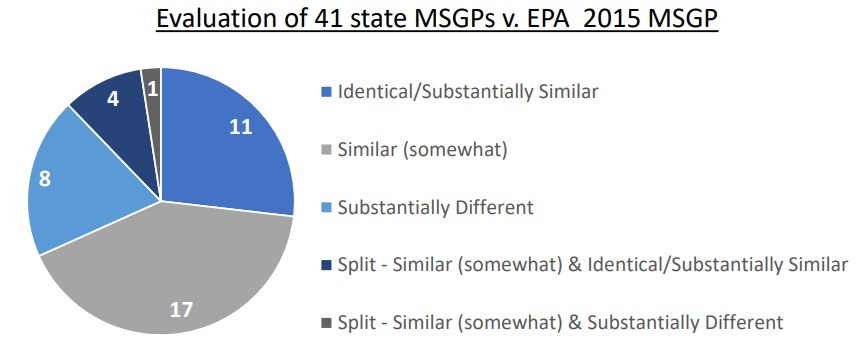EPA Releases 2021 Multi-Sector General Permit for Industrial Stormwater Discharges

The United States Environmental Protection Agency (US EPA) originally established per mit requirements under the National Pollutant Discharge Elimination System (NPDES) in 1990. The Multi-Sector General Permit (MSGP) establishes stormwater discharge requirements for 29 different sectors of industrial facilities. Industrial activities covered by the MSGP include, but are not limited to:
mit requirements under the National Pollutant Discharge Elimination System (NPDES) in 1990. The Multi-Sector General Permit (MSGP) establishes stormwater discharge requirements for 29 different sectors of industrial facilities. Industrial activities covered by the MSGP include, but are not limited to:
- heavy manufacturing (chemical plants, petroleum refineries)
- oil and gas exploration and processing
- mining operations
- landfills
- hazardous waste facilities
- textile mills
- transportation facilities
The revised MSGP was released to the public on January 15, 2021 and became effective on March 1, 2021.

The MSGP only directly applies to jurisdictions within the US where the US EPA is the NPDES permitting authority. Areas include Idaho, Massachusetts, New Hampshire, New Mexico, the District of Columbia, Puerto Rico, most US territories (American Samoa, Guam, Johnston Atoll, Midway Island & Wake Island, and the Northern Mariana Islands), Indian country lands, and some Federally-designated areas in the remainder of the US (mostly oil and gas facilities in Oklahoma and Texas).
While other (self-administering) jurisdictions are not required to include similar changes in their general permits, many states will likely incorporate the federal changes to their general stormwater permits in the future. In a recent evaluation of 41 individual state MSGPs, the US EPA concluded that 33 state MSGPs were at least “somewhat similar” to the federal MSGP. Facilities subject to MSGP requirements should remain apprised of any proposed changes to general stormwater permits within their local jurisdictions.

The basic structure of the permit will remain unchanged. Specific changes include:
- Certain facilities must conduct “report only” benchmark monitoring for pH, total suspended solids (TSS), and chemical oxygen demand (COD) on a quarterly basis
- Operators must consider implementing enhanced stormwater control measures to minimize impacts from major storm events
- Facilities must post a sign of permit coverage at the facility location
- Certain facilities that use coal tar seal coat or creosote will be required to perform “report only” monitoring for PAHs on a biannual basis
- Updated benchmark values for metals
- If the first year of benchmark monitoring shows average concentrations below the benchmark, monitoring for those parameters can be discontinued until year four of the permit
- Facilities discharging to impaired waters must monitor for all pollutants causing the impairment in the first and fourth year of the permit
- New requirements for responding to exceedances
Important Changes and Requirements for Facility Operators
The new MSGP imposes several requirements on existing facilities, including:
- Existing facilities must submit their 2021 MSGP Notice of Intent (NOI) by May 30, 2021
- Stormwater Pollution Prevention Plans (SWPPPs) must be updated at the same time
- The first quarterly monitoring period under the new MSGP will be July 1 – September 30, 2021
- The first annual report will be due by January 30, 2022
New facilities have additional requirements:
- New facilities must submit their NOI at least 30 days prior to their first discharge.
- The first quarterly monitoring period for new facilities will be the first quarterly monitoring period following their discharge authorization date. Annual reports will be due by January 30 of the following year for all covered facilities.
More information, including a recorded webinar and webinar slides covering the 2021 MSGP, is available here on the US EPA website.